Home> FAQ’s
In Perth, you can generally mow your lawn between 7:00 AM and 7:00 PM on weekdays and Saturdays. On Sundays and public holidays, the allowed time typically starts later, from 9:00 AM to 7:00 PM. These times are set to reduce noise disturbances in the neighbourhood.
Always check with your local council for any specific rules or restrictions, and consider using quieter equipment to be considerate of neighbours.
Yes, you can mow your lawn today, provided it falls within the permitted hours. The specific times depend on the day of the week:
Keep in mind that while these are the legal regulations, being a good neighbour means being considerate. Avoiding very early or late mowing can help maintain a positive relationship with those living around you.
Yes, but only if the soil is dry and the weather is warm or windy. A light watering after mowing can help reduce stress on the grass. If the lawn was already watered earlier in the day or if rain is expected, you can skip it.
Avoid watering in the heat of the day—early morning or late afternoon is best
It is recommended to mow before fertilising to allow better fertiliser penetration. After mowing, wait 24 to 48 hours before applying fertilizer to allow the grass to recover from mowing stress. Fertilising immediately after mowing can cause nutrient waste and damage the lawn. Fertilising is best done during active growing seasons like early spring and late autumn.
Noise restrictions for lawn mowers and other power tools can vary between councils across Australia, so it's always best to check your local council's guidelines. However, a common restriction for Sundays and public holidays is between 8 am and 8 pm.
General Rule: On weekdays and Saturdays, the permitted hours for using noisy tools are often earlier.
Consider your neighbours: Even if it's within the legal time frame, it's good practice to be considerate of your neighbours, especially on a Sunday morning.
In Australia, and specifically around Perth, the cost can vary based on service type, provider, and whether it's a one-off visit or a regular service:
The mole usually acts as a pest that tunnels underground, damaging plant roots and disrupting the garden bed. It can create holes and mounds in the soil that negatively affect plant growth, so players often need to manage or remove moles to protect their garden.
There is no publicly available schedule for the next Grow a Garden update without knowing the exact platform or developer. Checking official sources like the game’s website, app store page, or community forums is recommended for the latest update information.
While ants can sometimes be beneficial by aerating the soil, they can also cause problems by "farming" pests like aphids or damaging plant roots. Here are some effective and natural ways to get rid of them:
Trimming plants generally does not damage them if done correctly.
Garden waste removal services typically include the collection and disposal of:
Professional services often provide options like bag collection, skip hire, or man-and-van removal for convenience and efficient disposal
In most cases, yes — basic garden rubbish removal (like lawn clippings, hedge trimmings, or small branches) is included as part of regular gardening services. Larger amounts of waste, bulky items, or materials that don’t fit into green bins may attract an extra fee or require a special collection. Each service provider is different, so it’s best to confirm upfront whether green waste removal, disposal fees, or tip runs are covered in the price.
Yes, garden waste is commonly recycled in several ways:
Green waste includes organic, biodegradable materials primarily from gardens and landscaping, such as:
These materials can be composted or recycled into mulch, helping reduce landfill waste and support soil health.
In lawns, use a selective herbicide that targets weeds but won’t damage your grass. Regular mowing also weakens many broad-leaf weeds by stopping them from seeding. For small patches, hand removal works well—just be sure to pull out the root. Watering and fertilising your lawn will also help the grass out compete weeds naturally.
Hiring professionals ensures tailored treatment plans and effective long-term weed control.
Yes, long grass can be slashed when wet, but it’s generally not recommended. Wet grass is heavier and tends to clump together, which can clog or strain slashing equipment and leave an uneven cut. It also increases the risk of slipping or losing traction, especially when using tractors or ride-on mowers. Slashing in wet conditions can also damage the soil underneath by creating ruts or compacting it.
For the best results, it’s safer to wait until the grass has dried — you’ll get a cleaner cut, protect your machinery, and reduce the risk of accidents.
Yes — most lawn mowing services include removing and disposing of the grass clippings after the job, so your yard is left neat and tidy. Some providers can also leave the clippings behind if you prefer to use them as mulch or compost, which can return nutrients to your soil. If large volumes of green waste are produced, there may be a small extra fee for disposal, but this is usually discussed before the job.
Yes, you can schedule regular lawn mowing services. Many lawn care companies offer flexible plans to suit your needs, whether it's weekly, bi-weekly, or monthly mowing. Regular maintenance helps keep your lawn healthy, well-manicured, and looking its best year-round. Scheduling services in advance ensures timely care and convenience for you.

Our Professional Gardening Services, Lawn mowing, Weeding, Hedges trimming. Avail Our Professional Gardening Services Today!
Need Help?